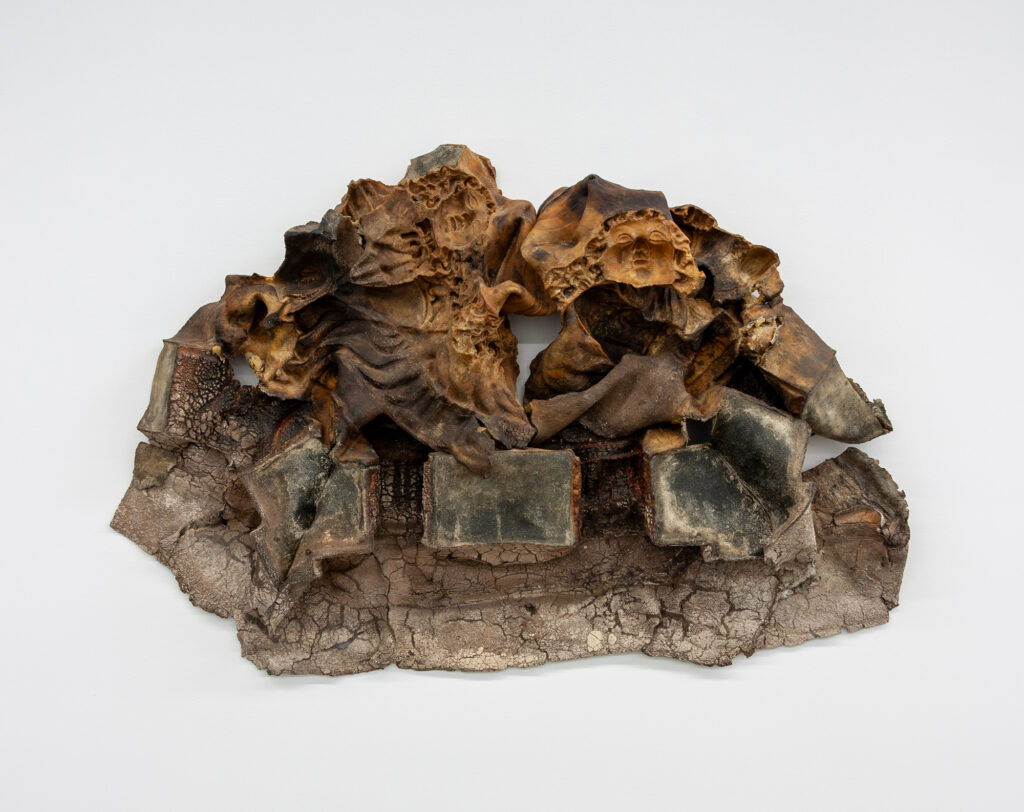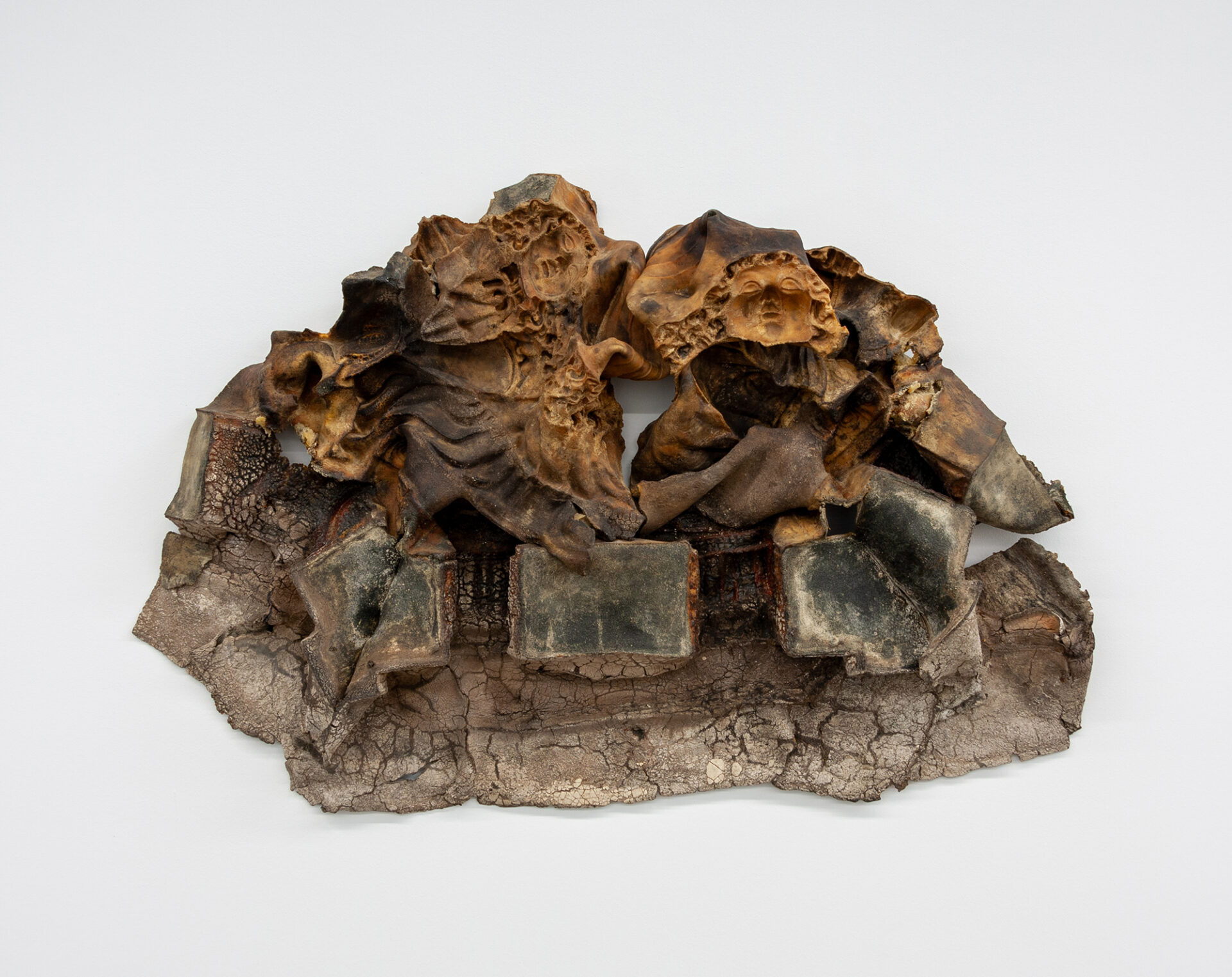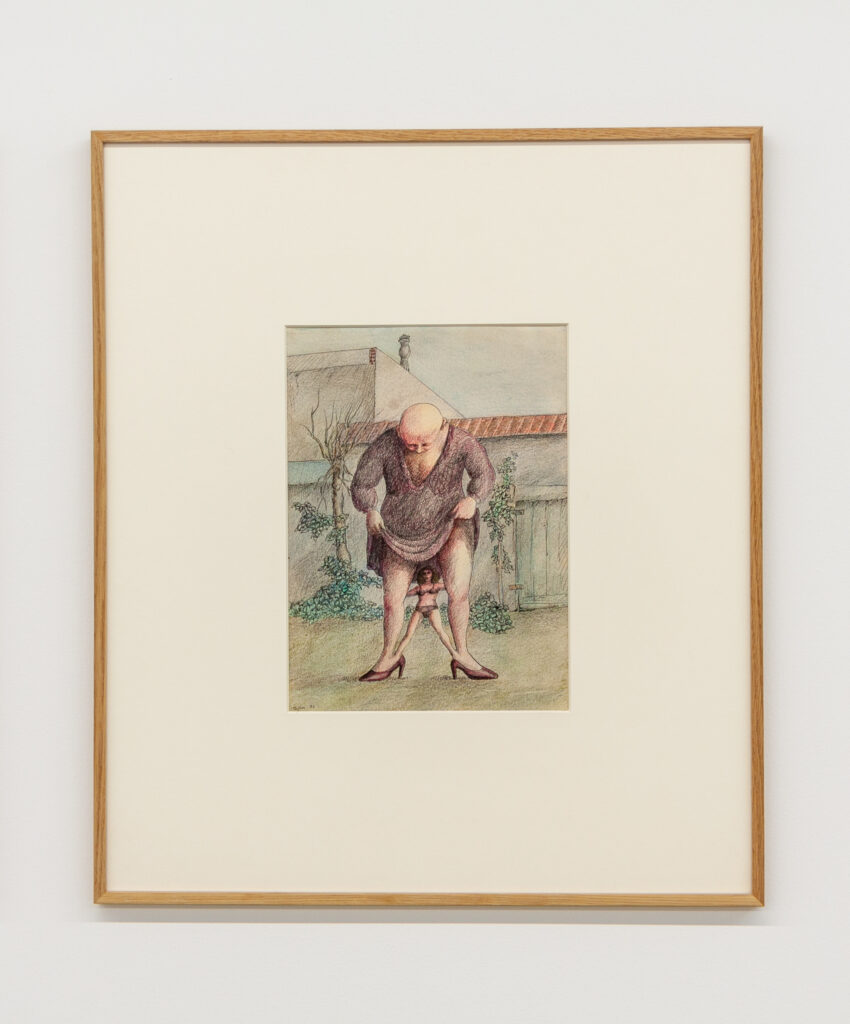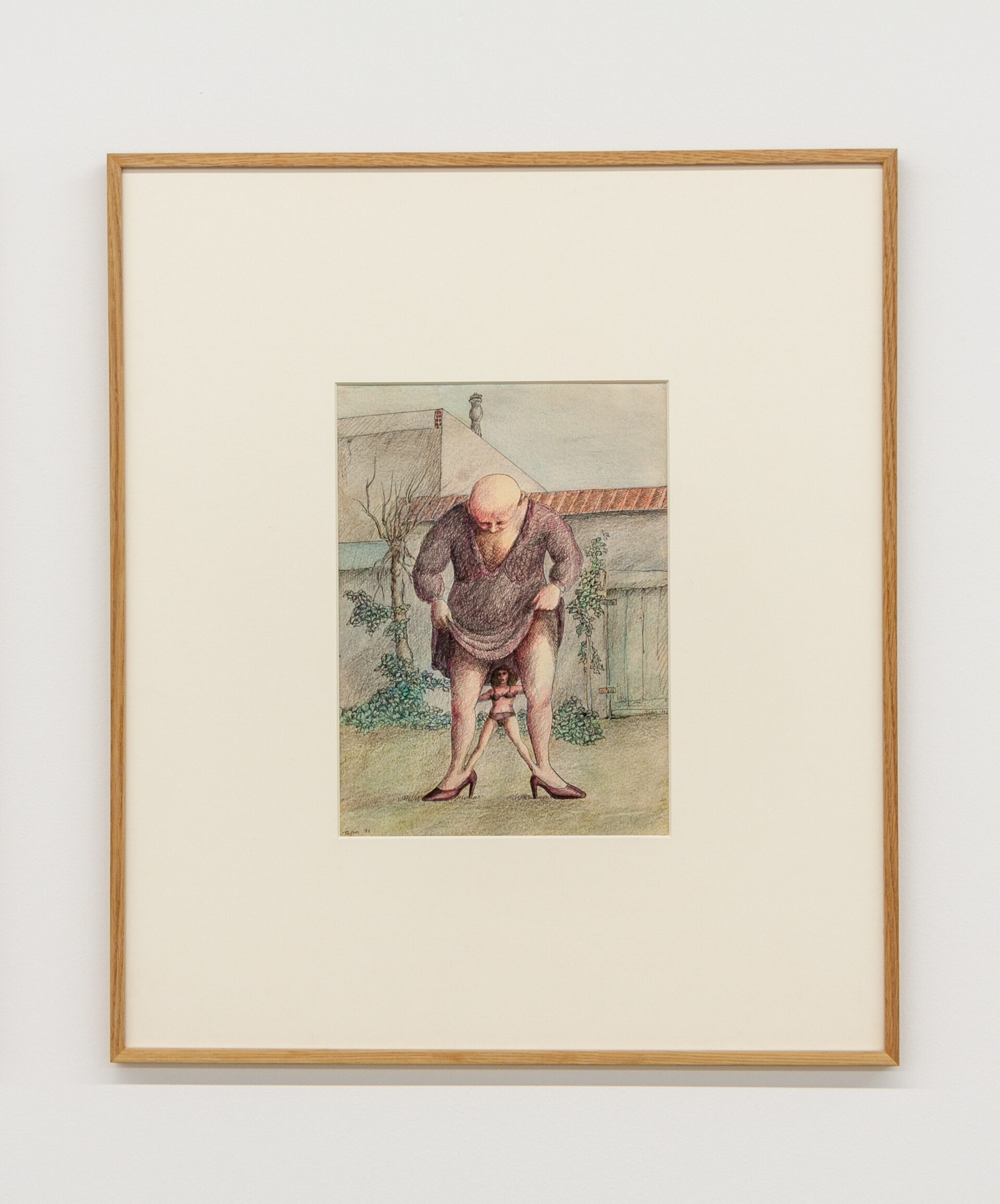Lewis Fidock & Joshua Petherick and Roland Topor
Exposable mines and the impious canto
04 May – 08 Jun 2024
“No… let us lead the haggard mattock-and-trench mob no deeper through the exposable mines of this impious canto!”
– Comte de Lautréamont, Les Chants de Maldoror
Objects sitting somewhere between Comte de Lautréamont’s transgressive and violent surrealism and Roland Topor’s estranged and darkly comic absurdity, or more specifically: occupying a space between the events of a chance encounter of a sewing machine and an umbrella on an operating table (Lautréamont), and when lying in bed searching the shadows, trying to find some steadying, reassuring objects… to then find the room had become a kind of breeding ground for monsters (Topor). Objects of analyticity and artifice enjoy being searched for in the shadows of horror, humour and insanity, where they also call upon abstraction, absurdity, disjunction, estrangement, the macabre and surreal, in order to be revealed in such a light that they become both compelling and strange — and undeniable.
Sitting between two pillars of surrealism: Lautréamont their prophet, Topor their post-war (and arguably final) rejuvenation/re-articulation, the thoughts of these figures offer a stable space in which to shine light on objects with the duality of analyticity and artifice. Within this exhibition, Topor plays the role of the literal pillar, presenting three drawings from the early 70s, while the collaborative work of Lewis Fidock & Joshua Petherick occupies the role of objects “sitting between”, of analyticity and artifice — objects typical of grey zones, here brought into the light.
*
This exhibition presents an overview of the past eight years of Fidock and Petherick’s sculptural and atmospheric collaboration, with works from each previous exhibition coming together for the first time. This group of works are both recognisable and strange, asking us to consider relationships between objects and time, the organic and synthetic, past and future; they disrupt our perception, yet feel familiar. The presence of each work is curious and palpable, drawing parallels to another figure of Surrealism, the French dramatist, essayist, theatre director and later psychotic Antonin Artaud, in particular his essay the Theatre of Cruelty:
In a word, we believe there are living powers in what is called poetry, and that the picture of a crime presented in the right stage conditions is something infinitely more dangerous to the mind than if the same crime were committed in life.
For Artaud, this new type of theatre called for a communion, or magical exorcism, that had the potential to liberate the human subconscious and present man back to himself. This act of disruption provides a sentiment echoed in Fidock and Petherick’s practice. For when in the company of their objects, strange and disorientating emotions and sensations are evoked, chiefly played out via this interplay of horror and humour, with abstraction, absurdity, the macabre and surreal also close by.
The three works by Roland Topor that sit alongside Fidock and Petherick’s sculptures offer a glimpse of a figure who was a true polymath of the second half of the 20th century. A provocative and spirited illustrator, author, humourist, satirist, playwright, actor, poet, painter, performer, and sculptor, Topor was a rich figure of Paris who birthed an endless stream of wild and dark ideas. Like his fellow Frenchman Artaud in the first half of the 20th century, perhaps Topor’s greatest achievement was in theatre, with the establishment of the Panic Movement alongside a small group of likeminded provocateurs. Opposing the commercialization of surrealism, these absurdist performances in many ways took off where Artaud finished, and after the group dissolved, Topor continued to create scandalous plays alongside his equally transgressive drawings and wider output.
Roland Topor appears courtesy of the Estate of Roland Topor and Galerie Anne Barrault, Paris



